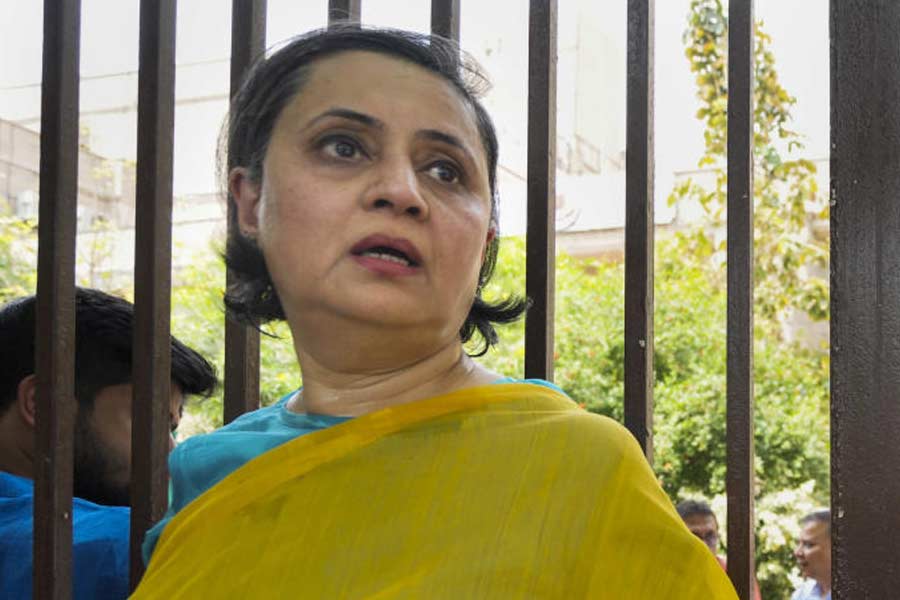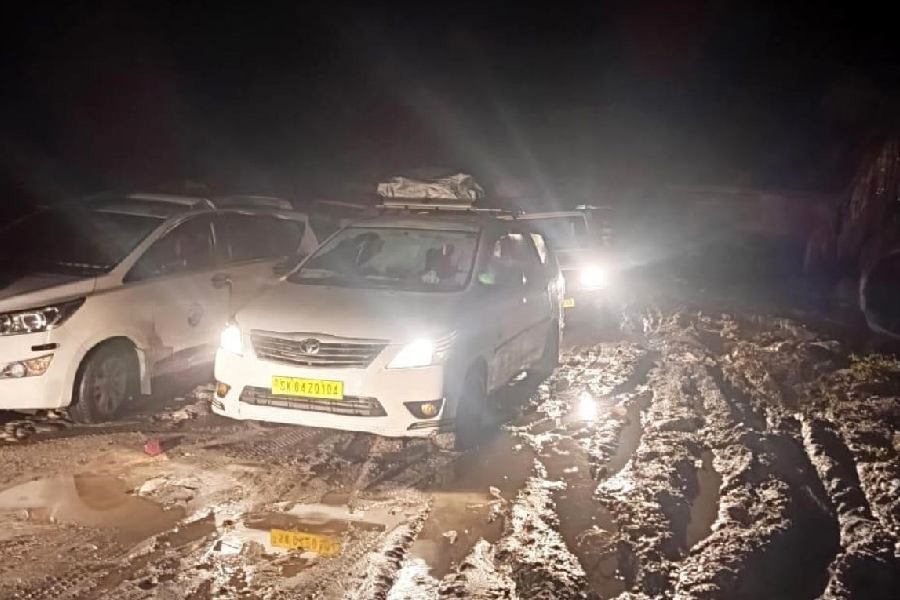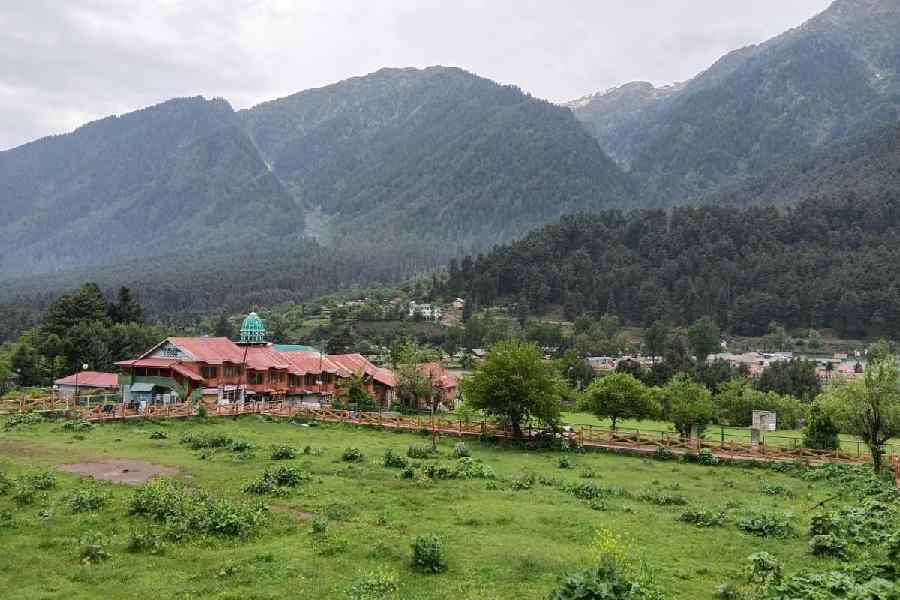|
|
| The mayor inspecting the cleaning of a water body in Kasba |
“Pukur aar kukur aajkal ek, bujhlen? Chhunlei jalatanko (A pond and a dog are the same these days, you see. Touch one and you’ll catch rabies),” says the senior official from the Calcutta Municipal Corporation, with a hearty laugh. Is he talking about civic officers like himself, caught between laws and their loopholes, land sharks and environmental lobbies? Is he talking about ordinary citizens who see next-door ponds disappear under their noses, as they bang their heads against walls variously known as corporation, pollution control board, fisheries department and so on? Or is he talking about developers and promoters who spend lakhs to acquire these wet spots and to cover their tracks (sometimes by fudging municipal records), only to be confronted by the ire of local residents?
For every big real estate project coming up in the city — particularly in south Calcutta — a water body or two seem to be getting lost. Some of these are engineered with admirable sleight of hand, while others run into a bit of trouble. A top real estate group faced fierce local resistance recently to its alleged encroaching of a water body near the EM Bypass. The court has now been asked to determine whether the plot of contention is land or water, since some civic records list it as ‘tank’, while earlier assessments took it to be ‘land’. If this leaves you unfazed, then it is likely that you will not be surprised at the fact that the CMC does not have an accurate and exhaustive list of tanks and ponds in the area under its jurisdiction — except for a crude list compiled between 1993 and 1998 when each borough was asked to provide the number of water bodies within it.
But here comes the catch. The CMC apparently has in its possession an up-to-date tanks-list, but chooses to keep it a secret. The said list is known to have been evoked to slap stop-work notices on no less than 412 projects. So is the CMC actually keeping vigil of our precious water bodies while we mistakenly dump all blame on it? Or could there be a more sinister reason behind the strange secrecy about the list? Civic employees point to the fact that most of the water bodies in the city are privately owned, and therefore, difficult to bring under regulations framed for public utilities. To cite an example, if an owner of a water body — that is, any plot over 5 cottahs which retains water for at least six months of the year — seeks permission from the CMC to fill it because it breeds mosquito larvae, then the CMC, following the rulebook, has little option but to give its nod. But there are other laws too, such as the West Bengal Inland Fisheries Act, 1984, the Town and Country (Planning and Development) Act 1979, the Water (Prevention and Control of Pollution) Act, 1974 and the West Bengal Land and Land Reforms Act 1956. These have powers to override corporation regulations, and between them, they make the filling of a water body look quite impossible.
But where there is a will, there is always a way to grab a water body. The residents of Central Park, between Jadavpur and Bagha Jatin, found out one morning that their only local tank — once measuring over 10 cottahs but now reduced to 8, thanks to the enthusiasm to dump waste and the lack of enterprise to clean — had been sold to 25 clubs in the Jadavpur-Garia area for the noble project of building a community centre. When the residents’ association demanded proof of the sale, the representatives of the clubs made a hurried exit. But there were enough indications that a not-so-noble ploy was at work. For one, records of the water body had done their own vanishing trick from the municipal documents (though old and available parchas listed it as “Tank no. 1”). For another, the once-regular cleaning of the tank had stopped on the ground that it was no use spending money on what did not belong to the public. The encroachment of a part of the land on one side of the tank by a big apartment project also went largely unprotested.
The residents around the Bikramgarh jheel had tried protesting when a gigantic real estate project had started eating into the 7-acre water body. The modus operandi was simple. The day’s rubble from the construction site would be collected at the edge of the jheel, and pushed into the water by huge bulldozers in the dead of the night. But too much money and political clout were involved here for the destruction of the water-habitat to be stopped completely. The jheel stands today, a ghost of its former self, choked to death by concrete deposits on one side and organic waste from the slums on the other side.
The corporation official who compared ponds to dogs also said that there are more vested interests in disputes over ponds than meets the eye. “The main complainant against the sale or encroachment of a pond often has as much interest in it as the land sharks he is fighting,” he says. If the Bikramgarh jheel were to be restored, it would also involve the eviction of slum-dwellers from around it. “It is like objecting to the sale of an empty plot behind your house under some pretext or another, but really because a building on it would reduce the amount of light and air your bedroom gets,” our man explains.
Imagine downloading images from Google Earth (the Central Park residents did that), drafting petitions, collecting signatures, and then making one futile trip after another to government departments — all this effort so that your bedroom remains airy or your favourite dumpyard is not snatched away from you? A collective effort by citizens to protest against an obvious illegal act is a more convincing argument any day.
The groundwater levels in Calcutta have dropped by 5-16 metres in the last decade or so, largely owing to the diminishing number of water bodies in and around the city. When fire raged in Burrabazar for days recently, the fire brigade kept complaining about the paucity of water-sources. For the last couple of monsoons, residents in some parts of Narendrapur have had to wade through water and sewage weeks after the rains ceased, because housing complexes have come up on water bodies and clogged the area’s natural drainage system.
And then one hears about the environment department’s guidelines on attracting birds to the city’s water bodies and wetlands. One also sees the huge billboards advertising apartment complexes (how many of these have filled or encroached on ponds, one wonders) with “60 per cent open space” and their own water bodies.
Calcutta continues to live in its ironies. That should be comforting enough.











